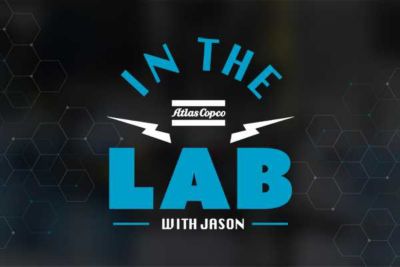Jet engine makers estimate they lose millions of dollars each year because nuts that seal fluid lines and hoses, called b-nuts, aren’t screwed on just right.
If the b-nuts are deemed too loose or too tight during testing, the engine has to be fixed before it can power a plane with paying passengers. Until recently, there were few good ways to tell if the nut had hit that sweet spot. Workers with torque wrenches had to rely on their skill and judgment to nail the delicate balance.
Pilot study in Cincinnati - Reducing maintenance error with wearable technology
GE Aviation recently conducted a pilot study which assessed the utilization of wearable technology to minimize errors, improve product quality, and increase mechanic efficiency. The pilot combined numerous technologies including Google Glass optical head-mounted displays, industrial augmented-reality software, and a smart wireless Atlas Copco Saltus MWR-85TA torque wrench.

For the purposes of the pilot program, Atlas-Copco agreed to lend the GE team a wireless torque wrench. The wrench used for the pilot program was an Atlas-Copco Saltus MWR-85TA torque wrench with a torque capability of 15-85 Nm (11-62.7 ft lbs). Atlas-Copco has several different models of wireless torque wrenches that could be integrated with the wearable technology based on the proposed application.
Exciting result
Some 85 percent of the 15 mechanics who participated said the system would reduce manufacturing errors, and 60 percent said they preferred using the wearable technology to the traditional methods. It took one senior mechanic 35 minutes to complete a task without the glasses and 32 minutes with the glasses — an 8 percent improvement. Later that day, while performing another maintenance task, the same mechanic clocked in 51 minutes using standard procedure and 38 minutes with the glasses — a 25% improvement. On average, across all mechanics studied, the efficiency improvements were between 8 and 11 percent, a number that might grow once the learning curve for use of the devices is mastered.
Based on the data, GE estimated that the bolt-tightening tech could save the company millions over a decade.
Thanks to Kristin Kloberdanz, Ted Robertson, Jay Bischof, Matt Geyman, Eric Ilse from GE






